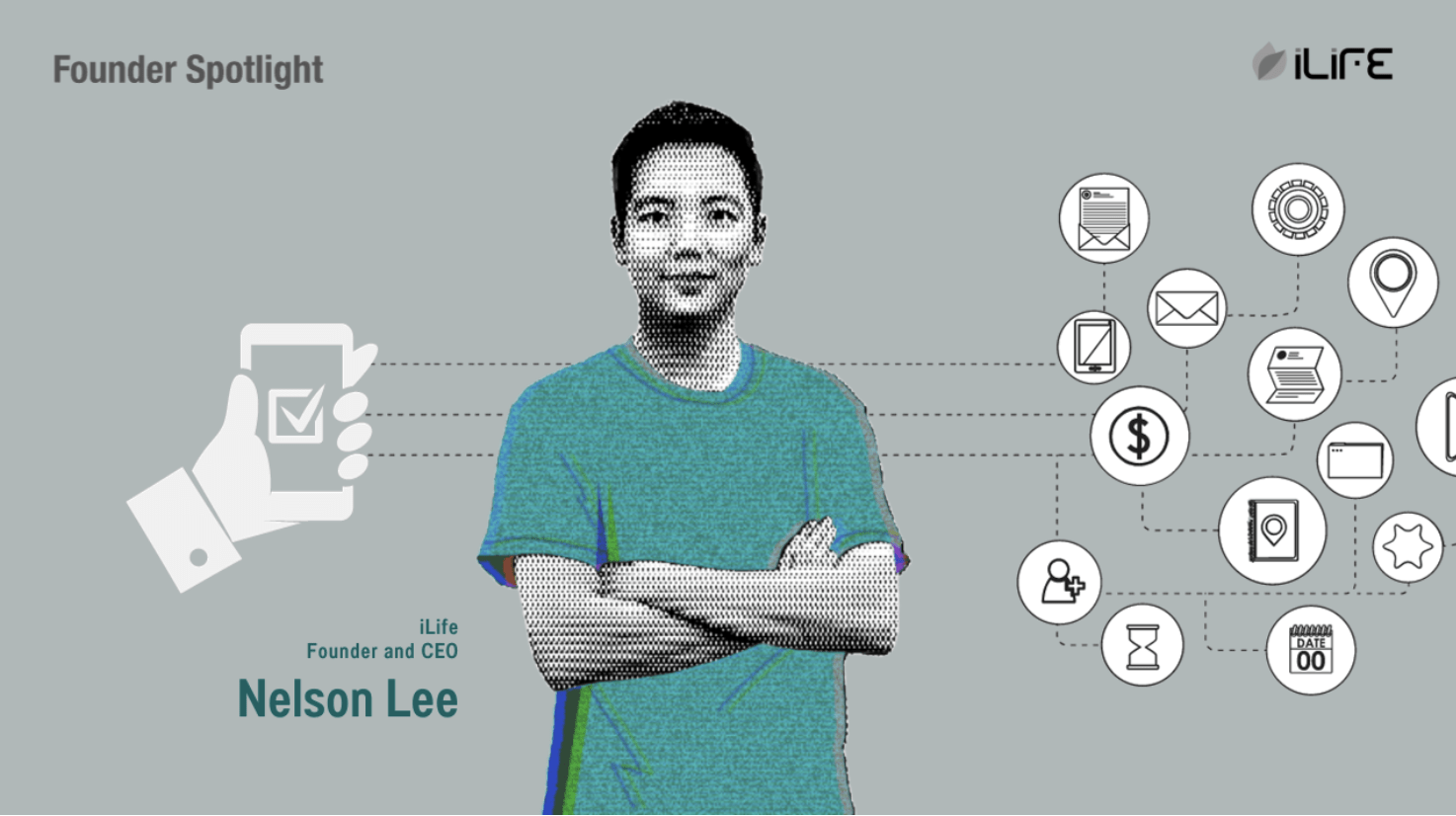AsiaTechDaily – Asia's Leading Tech and Startup Media Platform

Decoding ambiguity into opportunity: An interview with iLife Founder Nelson Lee
According to iLife* founder Nelson Lee, roughly $200 billion in premiums are signed annually in the U.S. insurance industry — in terms of life insurance premiums, 95% are sold by insurance agents and brokers, showing how critical these frontline workers are to this mammoth industry.
After interviewing 200 such salespeople, Nelson had another interesting finding: the agents’ work required them to use up to 14 separate SaaS applications to complete their daily tasks and effectively earn their commissions. And any digital upgrades usually required them to bear the cost themselves.
This unique problem formed the basis for founding iLife.
An “All-In-One OS” for insurance workers
Nelson shares that during his initial research on the insurance industry he was incredibly surprised to find that the massive, robustly growing sector had such minimal tech adoption.
Of course cross-industry tools like Salesforce had horizontal offerings for insurance companies, horizontal tools only go so far before the lack of verticalization become clear, such as the need to quote, apply, and create insurance specific engagement experiences in one place. It became clear that they key to successful verticalization in insurance SaaS was going to be connectivity between the critical workflows, databases, and stakeholders.
It was these discoveries that led Nelson down the path of founding iLife, a insurtech startup that offers SaaS (software-as-a-service) for insurance carriers and distributors.
“The insurance industry has historically had a very large and disparate set of software applications that don’t connect to each other well, or in many cases, don’t connect to each other at all. This creates a lot of pain and inefficiency for everyone from enterprise carriers, to agencies, and individual consumers,” Nelson says. “We founded iLife with the mission to get as many critical things done in one place as possible. Like a true OS for stakeholders who needed to interact together on a single front end interface.”
iLife vertically integrates previously disparate workflows in one place, from quoting, illustrations, to e-applications, CRM, appointments, to commissions tracking. Its mission is to unite as many functions in one place as possible within “front end” interfaces, which it defines as any process that happens before a policy is issued, typically for new business processing.
Today, iLife’s customer can choose to bundle or unbundle any of its core feature modules to fit their unique needs, much like the inspiration of iLife’s creation: iOS, in which users can pick and choose any combination of apps and features that suit their every needs, but for iLife in a verticalized fashion for a particular industry.
The opportunity lies in decoding customer sentiments
Fortunately for Nelson, entrepreneurship was in his blood – both his parents are entrepreneurs who had founded a software company in Taiwan.
“My parents started their own company the week I was born,” Nelson shares. “I watched them start businesses from when I was little, so I know how hard it can be, and it’s certainly not for everyone.”
This early exposure to entrepreneurship also helped Nelson develop a keen ear for listening to user needs, allowing him to create a product that vibes so closely with real-life demands.
For instance, during the above-mentioned agent interviews, Nelson found that most of those surveyed were quite eager to give feedback. While they all agreed that the current SaaS experience was poor, they couldn’t articulate exactly what they desired in a product.
Nelson saw this ambiguity as a great opportunity.
“If users are able to clearly articulate and draw out the future themselves, that’s not always a good thing, because the market might be more saturated for the opportunity, or at the minimum the future being described may not be that different from the present. I know this is against conventional wisdom, but I think when users struggle to articulate what a better future means, yet all agree on being in universal pain, that means opportunity for new players, because this difficulty in articulation means the new world must be substantially different from the present, and that present players with present moats may not necessarily be winners in the new world” he says.
A prime example of this is when many respondents began floating ‘wishes’ for individual features, such as a faster upload / download speed for client lists to save time when switching between platforms, when in reality they wanted to avoid having to do this all together, but were not able to describe exactly what that future looked like.
One of Nelson’s notable comments was related to how important it is to distinguish noise from company vision and roadmap, which in the early days could often be more art than science.
“The biggest challenge we recognized immediately in building an OS was that everyone wanted something different, and we really had to think outside the box” he says.
No matter how valuable market research results might be, he insists on routinely challenging market assumptions, or at least what the market assumptions may appear as on the surface.
“After hearing maybe 30+ different feature requests, we realized people didn’t want a better quoter, a better e-app, or a better CRM. They really just wanted everything in one place, which is not described very well by traditionally modular category names of software.”
The team’s determination to embark on a less traveled path, although not initially clear, has begun to pay off, with the platform having attracted more than 13,000 agent users, more than 30 carriers, and 21 million in venture capital funding, including from significant strategic investors from the insurance industry.
Takeaways:
1) Nelson discovered that the insurance industry had a lot of green field for innovation in the form of B2B SaaS, despite how big and old the industry is, and despite trends at the time of founding suggesting D2C was the more exceedingly popular strategy.
2) Coming from a family of entrepreneurs, Nelson understood the need to both listen deeply to users, but at the same time have a uniquely insightful interpretation of the future.
3) However, he emphasizes that it is critical to filter and decode user feedback to find the best solution.
*iLife is a Cherubic Ventures portfolio company.
This article is part of a partnership with Cherubic Ventures. Founded in 2014, they are an early-stage venture capital firm that’s active in both the US and Asia, with a total AUM of 400 million USD. Focusing on seed stage investments, Cherubic aims to be the first institutional investor of the next iconic company and back founders who dare to dream big and change the world.





